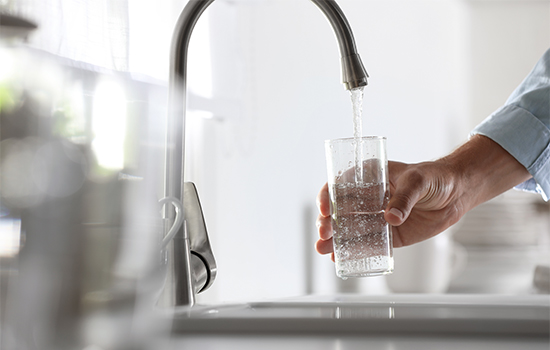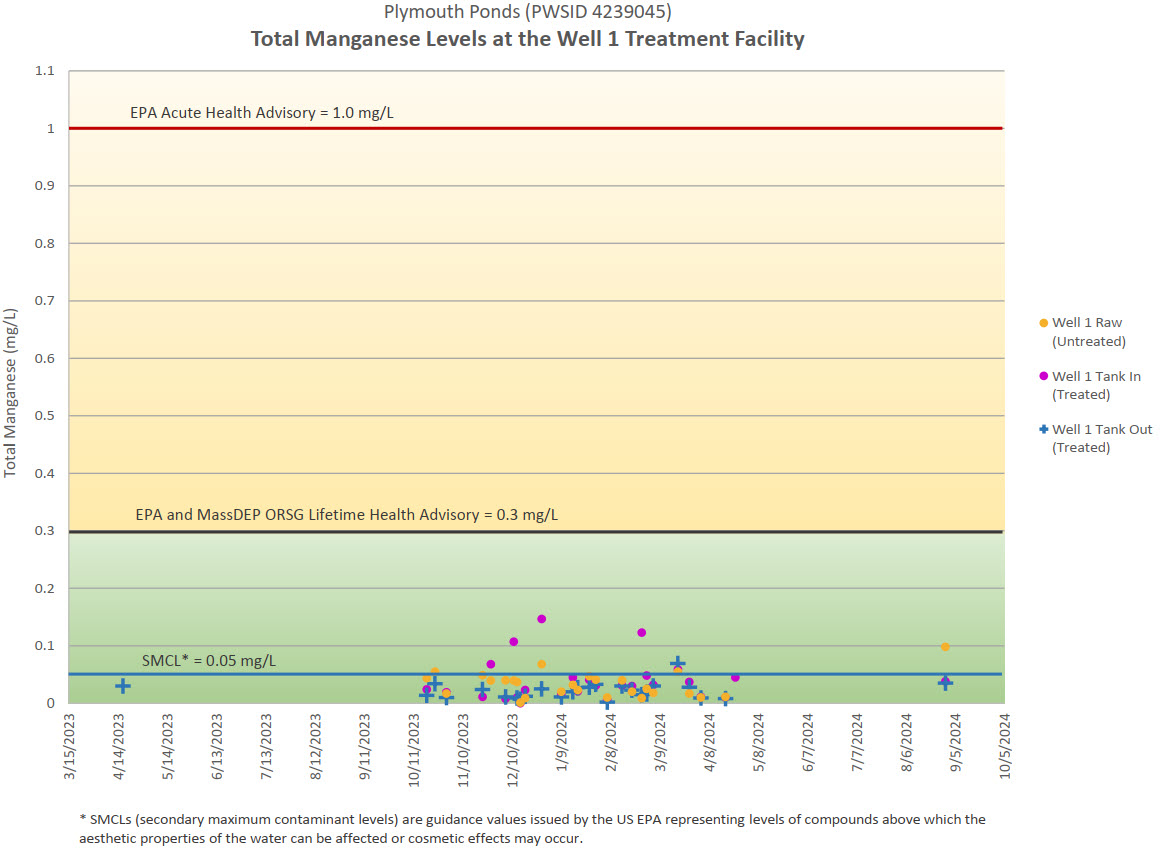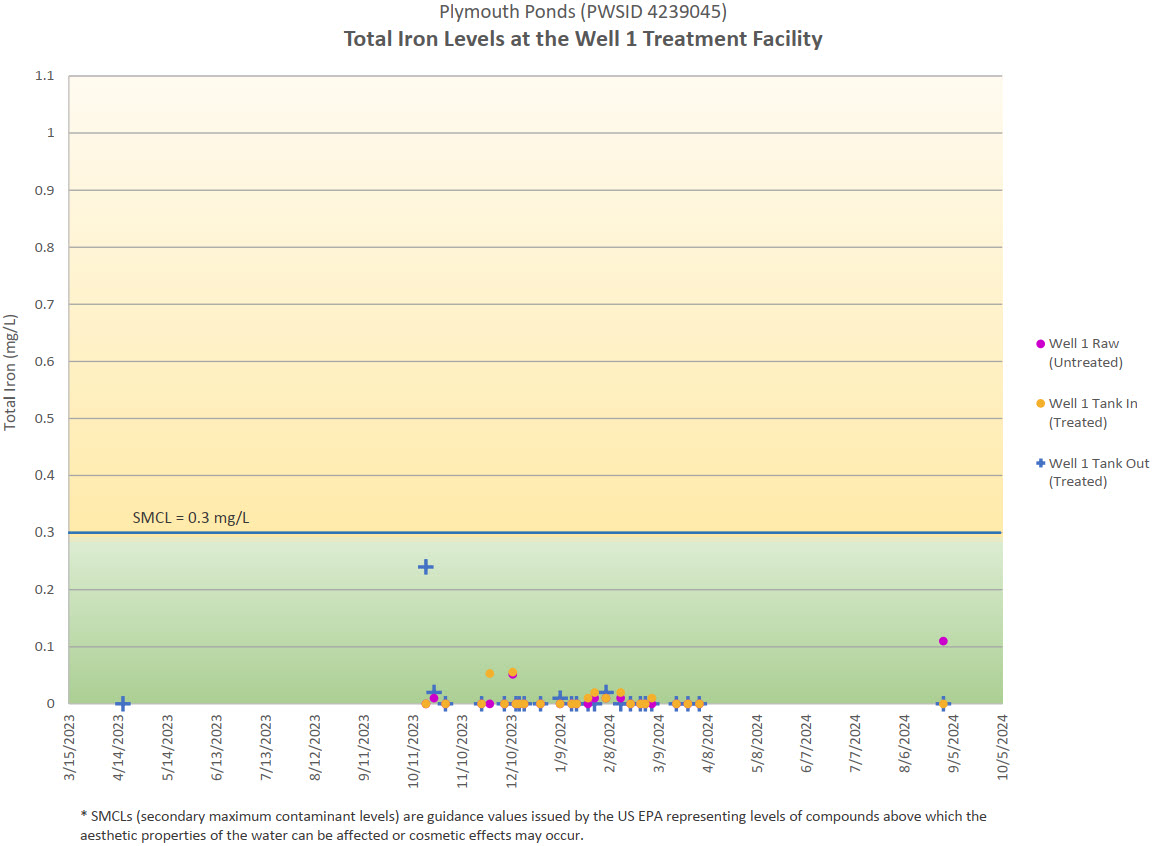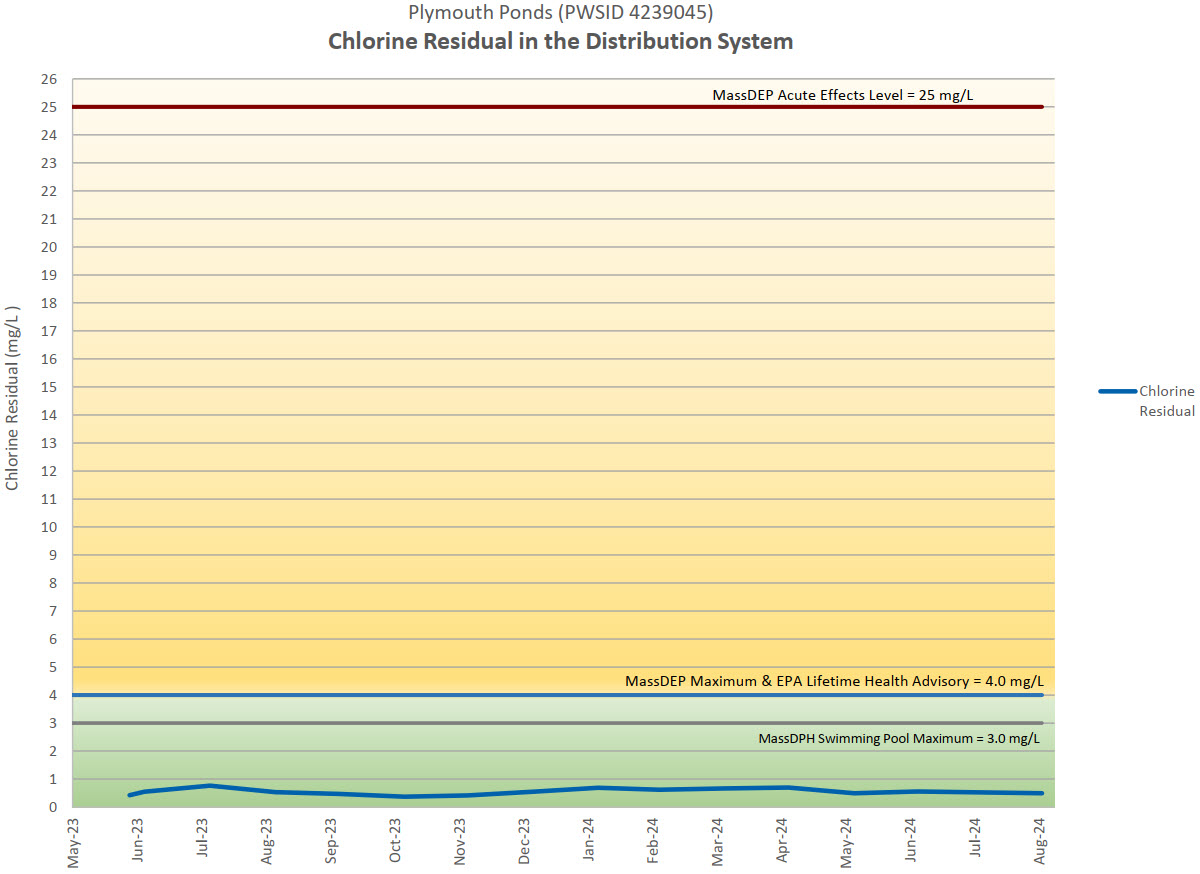Ponds of Plymouth Water System - Update
Aquarion’s commitment: delivering clean, high-quality water
Since acquiring the water system serving the Ponds of Plymouth in December 2021, Aquarion has been focused on enhancing both water quality and reliability of the system. We’re committed to providing your community with the best possible water experience.

4-4-2025 Update
Aquarion will begin a spring water main cleaning project on Sunday evening, April 6. This work will occur overnight from 9:00 pm to 4:00 am. The project is expected to take three week to complete. For additional details click here.
1-17-2025 Update
1-17-25 – Aquarion mailed an update letter to all Ponds of Plymouth customers. An electronic copy of the letter is linked below.
11-13-2024 Update
October 24 – Started enhanced water quality testing at the wells and in the distribution system, including more frequent analysis of iron and manganese levels. Data is being submitted to MassDEP’s online filing system eDEP so that the data is publicly available.
October 24 – Launched survey to seek customer input about their experiences with discolored water, including when it started, frequency, times of day when it occurs, and level of discoloration.
November 4 – Aquarion cut into water main on Lunns Way to evaluate buildup inside main. Aquarion then flushed this main in two directions to clear the buildup from the main.
November 4 – Aquarion installed a fifth sampling hydrant for the system at the intersection of Lunns Way and Garrett Place, which will facilitate monitoring of water quality in this part of the system.
November 12 – Aquarion completed a systemwide unidirectional flushing program, that was started on October 27.
December/January – Aquarion will Inspect and clean interior of the 2 million gallon water storage tank at Well 1 and the hydropneumatic tank at Well 2.
10-11-2024 Update
Scheduled Items
October 14 - Aquarion mailing letter to all Ponds of Plymouth customers (download pdf version below)
Week of October 21 - Aquarion will begin cutting open water mains to evaluate build-up
Week of October 28 - Aquarion will begin a system-wide flushing (this will be an evening flushing)
Public Open House
Date and Time:
Wednesday, October 2, 2024 - 6:00 pm to 9:00 pm
Description of the water system
The water system serving the Ponds of Plymouth includes the following infrastructure:
- Two wells, each with water treatment facilities
- One booster pump station at Well 1
- 15 miles of water main
- One 2-million-gallon water storage tank (located at Well 1)
- 841 service connections
- 147 hydrants
Both wells are in use. Well 1 is used as the primary source to ensure that the water in the storage tank remains fresh.

Why is system-wide water main flushing so important?
MassDEP states that the process is critical to the overall maintenance of a distribution system and is one of the most important practices carried out by public drinking water systems to maintain high water quality, improve the carrying capacity of pipes, and ensure proper operation of distribution system components, such as hydrants and valves. To learn more, visit MassDEP's Water Main Flushing FAQ for Consumers.
What is causing discolored water?
In short, there is evidence that for years (and perhaps decades), iron and manganese that occur naturally in the well water have been accumulating and building up on the inside of the water mains, and that this build-up is shedding off and causing discoloration. The chlorination that began in May 2023 may be accelerating this shedding.
In general, naturally occurring minerals, primarily iron and manganese, are typically the cause of discolored water in drinking water systems. Trace levels of these minerals can accumulate over time in water mains. When the water flow through a water main increases or changes direction, accumulated minerals can be disrupted and discolor the water that flows out of your faucets when you turn them on. This can occur if there is a water main break, an open hydrant, scheduled water main flushing, fire-fighting activities, street sweeping, an engineering project, and/or high demand, particularly in the summer with irrigation systems running.
In the Ponds of Plymouth wells, iron and manganese levels are typically low. As shown below:
- Manganese levels in the water at various locations in the distribution system are well below health advisory levels defined by health regulators (EPA and MassDEP), and generally below the aesthetic limit referred to as the Secondary Maximum Contaminant Level (SMCL). For more information about manganese, please refer to page 5 of the 2023 Water Quality Report.

Please note: The data plots for iron and manganese that are included in the presentation show results collected from the distribution system. The data plots on the webpage show results collected from the Well 1 treatment facility.
EPA - United States Environmental Protection Agency (regulates drinking water nationwide)
MassDEP - Massachusetts Department of Environmental Protection (regulates drinking water in MA)
- Iron levels in the water at various locations in the distribution system are well below the aesthetic limits referred to as the SMCL. There are no health advisory levels for iron defined by health regulators.

Please note: The data plots for iron and manganese that are included in the presentation show results collected from the distribution system. The data plots on the webpage show results collected from the Well 1 treatment facility.
Despite these relatively low levels of iron and manganese, over many years or decades build-up can occur, and we’ve observed clear evidence of a material build-up on the inside of the water mains in the Ponds of Plymouth water system. Specifically, during our flushing activities (described below), solid material has come out of the mains. The photo below shows an example of this solid material. This suggests that over the decades that the mains have been in place, manganese and iron have accumulated inside the water mains.
It is this build-up that we believe is causing the discolored water. We believe this build-up (which developed over decades) is now shedding off. We’ve heard inconsistent information from residents about when the discoloration started; however, we recognize that the initiation of chlorination in May 2023 likely began to weaken the build-up, resulting in the build-up shedding off and causing discoloration. Although removing this build-up is a good thing in the long run for the system and our customers, it is causing discoloration that we are focused on addressing as described below.

What is Aquarion doing to address discolored water?
Aquarion has been actively evaluating this issue and taking action to address it.
The evaluation includes investigating the potential sources of discoloration, including testing iron and manganese levels at the wells and in the distribution system (see graphs above), inspecting the interior of the 2 million gallon storage tank, and observing water quality through sampling throughout the distribution system on a regular basis and in response to customer complaints.
The primary action we’ve taken is to flush the water mains. This involves controlled hydrant flushing to remove sediments and build-up from our mains. This is done by opening fire hydrants to intentionally create a controlled flow disruption and then keeping the hydrants open and flowing to discharge the discolored water and sediments from the hydrants.
In 2023, we developed a plan to ensure the flushing is performed in an efficient and effective manner. We implemented this plan in November 2023, May 2024, and September 2024. The map representing the plan and its implementation in November 2023 is shown below.
Water systems are typically flushed once per year at most; however, with evidence of build-up inside the mains and the shedding off of this build-up, we have increased the flushing frequency for this system to expedite the removal of the build-up. Learn more about discolored water on our discolored water FAQs page.

See the flyer below for instructions on how to clear up discolored water in your service line and plumbing:
Why did Aquarion begin chlorinating the water?
Aquarion began chlorinating the water at both Wells 1 and 2 starting in May 2023.
We decided to begin chlorination for two reasons. First, we detected coliform bacteria in the water in the distribution system for four months in 2022. This indicated a bacteriological risk in this water system. The most reliable approach to addressing this type of risk is chlorination. Second, chlorination is a standard practice in the drinking water industry and is one of the most important advances in public health protection (Click here for more detail from the CDC). Chlorine kills harmful microorganisms that can cause disease, such as bacteria, viruses, and parasites, and immediate illness.
As shown below, chlorine levels, commonly called residuals, in the distribution system are well below the maximum level allowed by MassDEP.

MassDPH - Massachusetts Department of Public Health
Experiencing Discolored Water
Please contact our customer service team to report it at 1-800-732-9678 or cs@aquarionwater.com
Contact Us